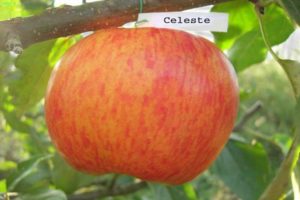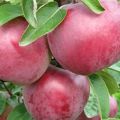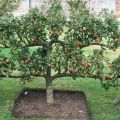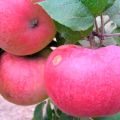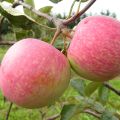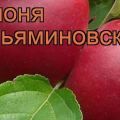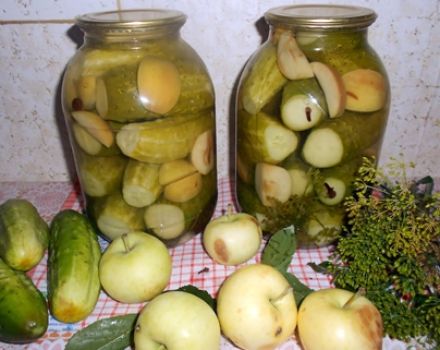Description and characteristics of the apple variety Bumazhnoe, the history of breeding and yield
For optimal organization of the garden, the correct selection of varieties of fruit trees is important. Apple trees are not the last in the list of mandatory components of any summer cottage. The paper apple tree has an unusual name, but it is one of the best varieties, the fruits of which ripen in summer. The material discusses the features of the apple tree, the advantages and disadvantages, and other related points.
Description and features of the variety
In the description of the variety given in the botanical reference book, the following information is indicated:

- tree of medium height with a wide rounded crown;
- deeply located root system, extending to a depth of one meter;
- the size of the fruits is medium, up to one hundred grams, almost always white, they are slightly sour in taste, the pulp is characterized by a delicate structure and juiciness, retains its taste well for a long time;
- in a cold summer, the fruits ripen in August. Bears fruit annually;
- the apple tree is resistant to frost and various diseases.
For reference! The apple tree belongs to the Rosaceae family, numbering about fifty species.
Apple tree breeding history Paper
The variety was bred for the climatic conditions of the Vologda region by two breeders P.I. Lavrik and L.A. Zhmurko. The researchers set the goal of achieving the fastest ripening of fruits in the short summer conditions typical for the specified area. The seeds of the Borovinka variety were used as a basis.

What are the varieties?
These apple trees are self-fertile, therefore, for the formation of an ovary, pollination is required in a cross way with nearby trees of a similar flowering period.
The apple tree has a subspecies - Paper Ranet, so it is necessary to clearly understand the differences when choosing a seedling for a home garden, so as not to be mistaken.
Rennet
The origin of the Paper Ranet is not known for certain. It is cultivated mainly in the Krasnodar Territory. Unlike Paper, its fruits ripen a month later - in September, the tree is less resistant to cold winter conditions and is prone to scab and other diseases. The apples are yellow in color with a characteristic red blush, juicy, sweet and sour taste, capable of retaining taste until spring.

What are the advantages and disadvantages?
The variety is characterized by the following advantages:
- high fertility, which persists every year;
- resistance to fungal diseases;
- the ability to withstand the harsh climatic conditions of cold winters;
- early ripening of fruits and their high taste;
- long keeping quality of apples (for the whole winter);
- relative compactness of the tree.
One of the main disadvantages is the fragility of the branches, which is a problem in high winds.

Planting and growing conditions
The landing site is chosen to be protected from the cold north wind. A hole is dug to a depth of ninety centimeters, with a diameter of about one meter. The main condition is that the size of the planting pit must exceed the size of an adult tree.
The base of the pit is loosened up to a depth of twenty centimeters, then covered with a fertile layer of soil, and the necessary mineral and organic fertilizers are applied. The applied fertilizers are mixed with the loosened soil, and a mound forms in the center. After that, the land is left for a couple of weeks, only then they begin to plant.
The seedling is pre-soaked in water for a day in order to restore the lost moisture in the root system. A wooden rod is placed in the center of the formed mound to form a support for the seedling. Planting is carried out by two people: one sets up a tree in the center of the mound, the second spreads the roots and sprinkles them with earth. The depth of the seedling is five centimeters of the rootstock. If this is not observed, its own root system will begin to form, and the benefits of the variety will be lost.

As it is added, the soil is trampled down tightly. After planting, the tree is fixed with a twine to a wooden support. Watering is carried out as the soil absorbs moisture - about one hundred and fifty liters. From above, the soil is mulched with the addition of humus or peat. A week later, watering is repeated.
In the initial couple of years after disembarkation, it is necessary to weed the near-stem zone and carry out regular watering - monthly. Water consumption is determined by the age of the apple tree - according to the number of buckets for each year.

An adult plant requires at least four abundant watering per season:
- in early spring, before bud break;
- twenty days after the end of flowering;
- a month before picking up the fruit;
- with autumn leaves falling.
It is not recommended to water during harvest to prevent cracking of the fruit and to ensure the duration of the storage of apples.
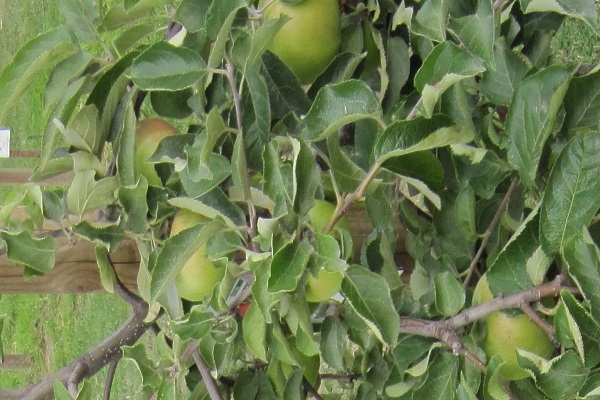
Productivity and frequency of fruiting
The apple tree gives a consistently high yield. From an adult tree - from eighty kilograms or more. Fruiting is regular, the yield does not decrease from year to year.
The first fruits are set four years after planting. To ensure a stable harvest annually, the amount of ovary is manually adjusted, the excess is removed. Ripening time - from the twenties of August to mid-September.
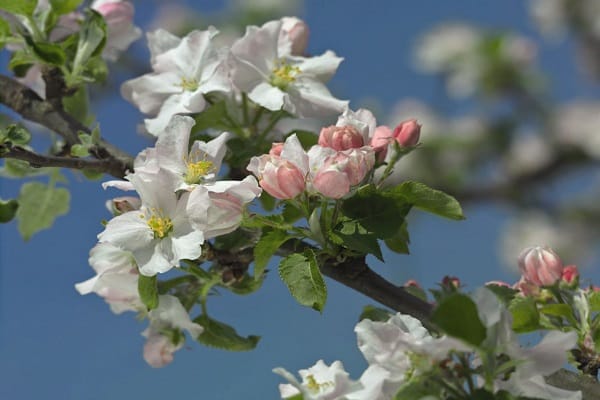
Frost and disease resistance
The paper was derived from the calculation for growing in cold winter conditions. The variety is able to withstand prolonged winter frosts. With the onset of cold weather below thirty degrees, the crown is wrapped up to avoid damage. With heavy snowfall, snow is cleared from the crown in order to prevent branches from breaking off.
The apple tree is resistant to scab and powdery mildew, but prone to fruit rot - one of the few diseases that are dangerous to the culture.

The best regions to grow
The most suitable conditions for growing a crop are the Moscow region, the Leningrad region and the Volga region, based on the qualities planned for breeding the variety.
As you can see from the presented material, the Paper apple tree is a wonderful variety, characterized by high fertility, resistance to frost and diseases, and excellent taste of fruits.
But, when choosing such a seedling, it is important to take into account the local climatic conditions - how suitable they are for a given crop.


